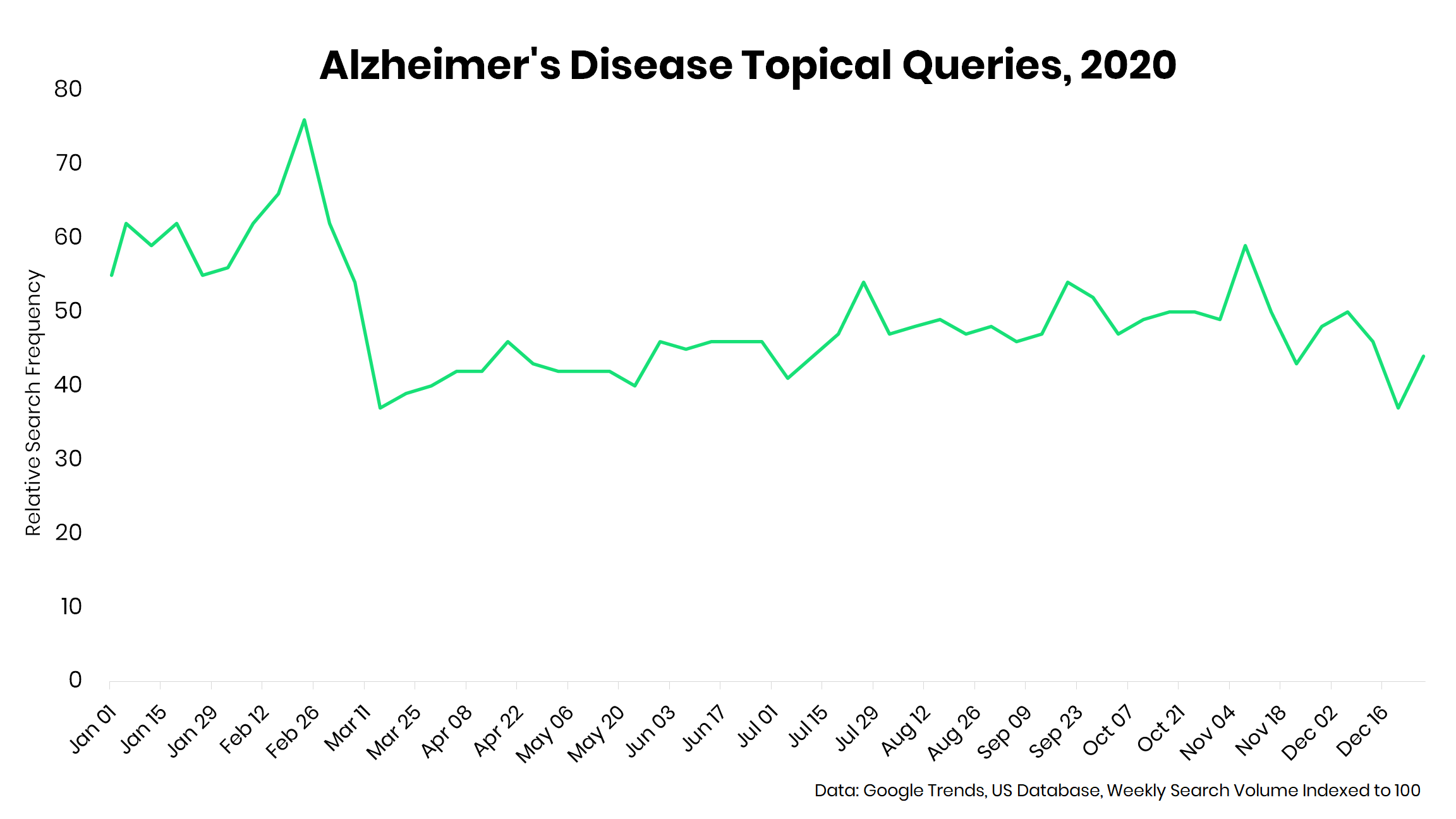Here’s what healthcare marketers need to know for 2021
In the year ahead, lay the groundwork for your future content marketing efforts while COVID persistsIt’s true: 2020 was a tumultuous year for writing about health topics, to say the least. The world’s hyper-focus on COVID upended every organization’s messaging strategy, and a year of disruption stretched audiences’ capacity for editorial coverage to the limit. Any article discussing future trends risks going out of date (remember those trends pieces written in January 2020?).
Nevertheless, a few emerging trends from the past year stand out as important for health marketers to consider in the year ahead.
Some “evergreen” topics will continue to be overshadowed by COVID
It’s no surprise that COVID dominated the health content landscape in 2020. You might have heard that COVID interest declined over the course of the year, but that doesn’t mean typical “evergreen” topics have just snapped back to normal.
[ICYMI, COVID search trends during the pandemic]
According to Google Trends, queries on the topic of Alzheimer’s disease have been down 25% on average per week since March 15 compared to the 2019 weekly average (see chart below for the 2020 trend). Likewise, Google News searches on cancer topics dropped 38% immediately following the start of the pandemic and have yet to recover.  This trend persists in social channels as well. Non-COVID, cancer-related articles received 981 engagements per article on average since March 1, according to our research using Buzzsumo (down 35% compared to similar content published in January–February 2020).
This trend persists in social channels as well. Non-COVID, cancer-related articles received 981 engagements per article on average since March 1, according to our research using Buzzsumo (down 35% compared to similar content published in January–February 2020).
These diseases certainly haven’t waned, nor the number of patients, caregivers, and family members affected by them. But while COVID remains a pressing concern, your readers and customers may consider other queries to be a secondary priority.
A proactive content strategy will pay full dividends after the pandemic subsides
It’s tempting to rely on what people are searching for and talking about now instead of thinking about what they might be talking about tomorrow. But this can’t be a dogmatic approach.
The day after lockdown in March, a whole array of new questions emerged. Addressing them required a level of forethought that goes beyond simple search and social metrics. Telehealth and the implications of working from home were massive topics of interest. Who would have thought we would be so obsessed with face masks a year ago? The entire subtopic of “maskne” barely existed at all! Organizations that thrived in 2020 were those that either had already developed an expertise and a foundation in those emerging topics (for example, forward-thinking on the subject of telehealth), or were able to pivot quickly to a new messaging strategy (which can be exceptionally difficult for small teams).
Any organization has medium- to long-term priorities that may be aspirational in nature. Do you have a new product line set to launch in 12 months? Is there a new expert source that joined your team in the past year? Even though audience focus remains on COVID (especially with the vaccine rollout), organizations can build the basis for a strong foundation for those new topics and initiatives with smart, SEO-focused editorial content. When audience attention re-centers, those organizations will stand to benefit.
Trusted sources have never been more important
Myriad words and topics entered our collective lexicons in 2020 (our sympathies to Merriam-Webster). From tongue-twisters such as hydroxychloroquine and remdesivir to new cure-all’s like apple cider vinegar for… seemingly everything. But what was a casual news consumer to make of all this? It depends a lot on their information diet, which for the average American is rather poor.
When misinformation and health hype fills our social feeds, no one benefits but the providers of said poor information. After all, this was a year in which “Plandemic”, a conspiracy-laden video, was one of the most-shared health videos across several social platforms with more than 22 million social engagements across multiple YouTube video links, according to Buzzsumo.
There’s no guarantee when someone goes to Google or Facebook that there will be only truthful information at their fingertips. Responsible organizations need to lead the way to ensure people can find correct, useful information in their topics of interest.
So what does this all mean for healthcare marketers?
COVID isn’t forever. States are distributing vaccines which hopefully will create some semblance of normalcy soon. If you’re a content creator who focuses on topics affected by diminished attention over the past year, this is a perfect time for you to invest in content that can be published in the coming months and promoted to audiences who are ready to turn their attention to other pressing topics.
A planning session (or two, or three) should be in the cards to align your organization’s priorities. A data-informed strategy—combining current trends with future expectations—can set you up for search and social success. Decide which topics you can own, and which you should pass on. These topics could be condition-oriented (think medical expertise) or product/service-oriented (think relief/treatment options). Just be mindful to do so with clear authority and audience buy-in for the sake of our shared information diets. R
At Revmade, we’re always ready to help you work through this process.
Subscribe
Get our weekly newsletter for tips on how to drive better content marketing performance.
For a regular stream of ideas, research and links we find helpful. And of course, to say hi!
